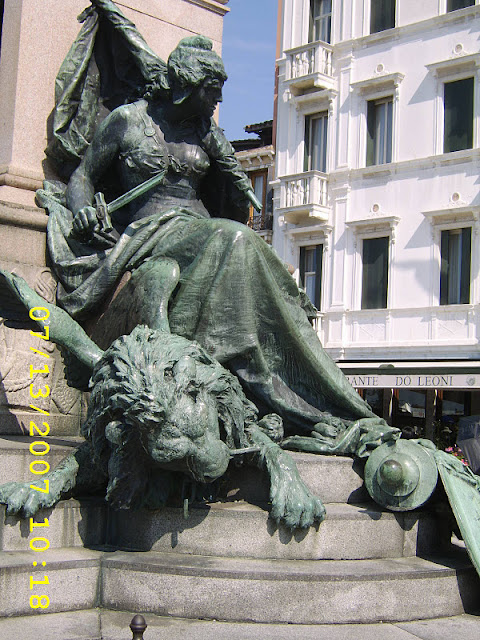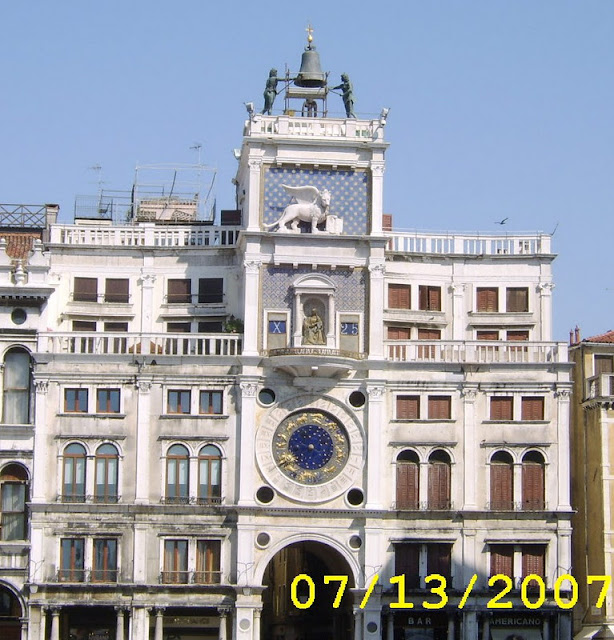Venice is the most popular city in Northern Italy and a major tourist attraction in Europe. It is one of the most beautiful and romantic cities in the world. During the Middle Ages and the Renaissance, the Republic of Venice was a major maritime power in Europe.
The Most Serene Republic of Venice dates back to 827, when a Byzantine Duke moved its seat to what is now known as the Rialto, and for the following 970 years, prospered on trade and under the rule of a Roman-style Senate headed by the Doge. In 1797, the city was conquered by Napoleon, a blow from which the city never recovered. The city was soon merged into Austria-Hungary, then ping-ponged back and forth between Austria and a nascent Italy, but Venice is still a monument to the glory days of the Renaissance, and historical culture still throbs powerfully in the old Italians' veins.
Venice, the world's only pedestrian city, is easily walkable, and the absence of cars makes this a particularly pleasant experience. However, walking and standing all day can also be exhausting, so it is best to pace yourself. The Rialtine islands - the 'main' part of Venice - are small enough to walk from one end to the other in about an hour, provided you don't get lost (a common occurrence).
If you want to get around a bit more quickly, there are numerous vaporetti (water buses) and water taxis. The vaporetti are generally the best way to get around, even if the service route map changes frequently. If you are going to be in Venice for a few days visiting, it is a lot cheaper to use vaporetti than private water taxis. If you want to have a romantic ride along the canals, take a gondola ride, although they tend to exist for more scenic purposes, rather than getting people from point A to point B.
St Mark's square was described by Napolean as the most beautiful dining room in Europe. It is the only true square of Venice. Dominated by it's Byzantine Basilica of St. Marks that's a unique architectural masterpiece that is some 175 metres wide whose form closes one side of St. Marks Square.
Facing St. Marks Basilica with your back to Piazza San Marco, to the right is an opening to sea and the bay of San Marco which in the old days was the main entrance to the city as visitors in those days arrived by sea. Two giant columns form a mock entrance gate to the city, one crowned with the ever-present winged Venetian Lion, the symbol of the Venetian Republic, and the other with a statue of St. Theodore.
Coming back to the square you will see the Campanile, bell tower of St. Mark's Square that has dominated Piazza San Marco since Medieval Times. In its original form, it first served Venice as a wooden look-out tower. Constructed of wood it was very vunerable to lightning strikes and after various fires it was decided in 1549 to build a stone bell tower that was designed by the great Venetian architect Sansovino to house the "arsenalotti guards". The ‘campanile' bell tower is 98m 60cm high. In 1902 the campanile collapsed, luckily with no victims apart from the caretaker's cat and Sansovino's ‘Logetta'. However it was reconstructed immediately with foreign financial help and was re-opened on April 25, 1912.
On the opposite side of St Marks square to the bell tower you will find the Torre Dell'Orologio - Clock Tower. The ‘Torre dell'Orologio' was built between 1496 and 1499 to hold the large blue clock with golden decorations to represent the signs of the zodiac. The clock indicates the time as well as solar and lunar phases used to calculate the tide, in order to know when it was favourable to set sail. At one point the deterioration led to the clock stopping completely.
Other buildings of note that line Piazza San Marco, and make St. Mark's Square such an incredible attraction include "La Libreria Sansoviniana', which was built between 1537 and 1588 and houses the 900 volumes left to the city by Cardinal Bessarione in 1468. It would also have housed the inheritance left to Venice by Petrach if it hadn't been stolen. Venice's most celebrated architect was again commissioned to build the library which featured an intricate facade. The architect made an error in the design and when the facade collapsed after its construction, Sansovino spent some unpleasant months in prison as a punsihment.
At the opposite end of Piazza San Marco, facing St. Marks Basilica, there is the ‘Procuratie Vecchie' where the powerful prosecutors of the Venetian Republic lived. The Procuratie Vecchie was designed by Mauro Codussi and finished at the first half of the 16th Century. Napoleon's wing was built in 1810 and today houses the Correr Museum which overlooks St Mark's Square. The neo-classical rooms built on the wishes of Napolean, which after the fall of the Venetian Republic, became the royal palace of the French.
On two-sides of Piazza San Marco, facing each other are cafes where you can sit in the splendor of the most beautiful drawing room in the world. In the evenings, each cafe boast orchestras that entertain their clientele and passer-bys. Their is quite a competition between the orchestras as they challenge each other for the attention of tourists.
Murano glass is a famous product of the Venetian island of Murano. Located off the shore of Venice, Italy, Murano has been a commercial port as far back as the 7th century. By the 10th century, the city had become well known for its glassmakers, who created unique Murano glass. While Murano glassmakers have settled and operate elsewhere, some say authentic Murano glass is fabricated only in Murano.
It is believed that glassmaking in Murano originated in 9th century Rome, with significant Asian and Muslim influences, as Venice was a major trading port. Murano’s reputation as a center for glassmaking was born when the Venetian Republic, fearing fire and destruction of the city’s mostly wooden buildings, ordered glassmakers to move their foundries to Murano in 1291. Murano glass is still interwoven with Venetian glass.
Murano's glassmakers were soon the island’s most prominent citizens. By the 14th century, glassmakers were allowed to wear swords, enjoyed immunity from prosecution by the Venetian state, and found their daughters married into Venice’s most affluent families. However glassmakers were not allowed to leave the Republic. Many craftsmen took this risk and set up glass furnaces in surrounding cities and as far afield as England and the Netherlands.
By the end of the 16th century, three thousand of Murano island's seven thousand inhabitants were involved in some way in the glassmaking industry.
Murano’s glassmakers held a monopoly on quality glassmaking for centuries, developing or refining many technologies including crystalline glass, enamelled glass (smalto), glass with threads of gold (aventurine), multicoloured glass (millefiori), milk glass (lattimo), and imitation gemstones made of glass. Today, the artisans of Murano are still employing these century-old techniques, crafting everything from contemporary art glass and glass figurines to Murano glass chandeliers and wine stoppers.













































































































































No comments:
Post a Comment